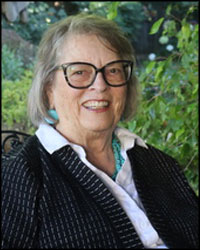« Cairo burning… | Unveiling the Mind in Egypt »
Building Leadership Capacity: To ASCD Chicago…and Beyond!
by Ryan Land
Last spring at one of our Leadership Team meetings (comprised of principal, vice principals, department heads), I pitched the idea of a trip to Chicago to attend ASCD’s 2010 Teaching and Learning Conference. The conference theme was “Closing the Learning Gap” and the emphasis on teaching and learning in high stakes times, while working with at-risk learners in their many forms, seemed like it would be useful and engaging for the instructional leaders in our school. I am the principal of R.D. Parker Collegiate in Thompson, Manitoba. In my second year as principal, I know both the legend and the reality of our context for teaching and learning, and I truly felt this would be an opportunity worth getting excited about. We have been working with the Manitoba School Improvement Program for a number of years, and this was to be the catalyst for building leadership capacity within our recently reinvigorated department head structure. Add to the mix the fact that it was looking like the bulk of the funding would come from outside the school-based budget, and it was starting to feel like an ever-elusive win-win.
I suppose I should admit to being a constructivist, an optimist and a sometimes-poet, before I confess that my big idea went over like a concrete hang-glider when I first floated it off the cliff edge. I was hit with questions like “Do we have to go?” “Why Chicago?” and “When do we have to let you know by?” when I was hoping for something more along the lines of “When do we leave?” or “Wow, you really do care about us, Mr. Principal!” Okay, relentless optimism aside, I can honestly say I was not that surprised that I got what I did. Most days, I feel a little like the interim coach of someone else’s team where our Department Heads are concerned. The structure was finalized and the team was picked after I was hired, but without my input, and while I was asking for a role description that included instructional leadership for the 21st century, critical reflection, social justice activism, strategic vision and data-driven, continuous school improvement, I got one that mentioned budget, timetable, curriculum, meetings, and school planning, and I found myself up against staunch defenders of their respective departments and curricula (Note: This is, I acknowledge, a sweeping generalization, that is only mostly true.) . The harsh reality of this was that in a school with such a turbulent recent past, influential pockets of deeply committed opposition, and a relatively toxic climate with a silent, downtrodden majority, I could not afford to be the only leader. My attitude from the start has been–in the words I once heard from Wayne Hulley–“I don’t have to like it, but it is.” The catalyst for moving our team forward, closer to a shared understanding of roles and responsibilities, has been the work of Linda Lambert in the area of building leadership capacity. ASCD Chicago was to have been our pilgrimage–at least as much about the journey as the destination.
Late last year I bought our Leadership Team Lambert’s (1998) book Building Leadership Capacity in Schools as it was manageable, accessible, and I felt we would be able to see ourselves in the case studies. It also included a “Leadership Capacity Survey” that proved to be a good leaping off point for introspection and a more open, non-threatening dialogue. One of the things I had heard from the Department Heads–in various ways and venues–was that they did not sign up for the leadership aspect of the position, and they did not feel that they had the training or expertise to lead. Thus, Lambert provided a theoretical framework for our needs, and Chicago provided the opportunity to move forward and build capacity through team-based professional development and shared experience. Despite the early resistance–which was more about climate and fear, than about subversion–it was not too long before every member of the team responded and expressed an interest in going to Chicago. As we met to plan the trip and register, our administrative team chose a couple of sessions for the whole team based on school goals, the vision, and a desire to have some common professional development and dialogue, and we also made room for small group selections and individual choices (these became small group anyway, for the most part). We struck up a social committee and I daresay a little excitement began to build.
The trip was inevitably intense but we managed to work in a team meal at one of America’s most renowned steak houses, a hockey game that saw the Oilers trounce the Blackhawks and a reasonable amount of shopping in between and around some of the best PD sessions any of us had ever been to. This “teaching and learning” conference was rich with teachers and classroom-based consultants and their experiences resounded with us despite the geographical distances between us. Our group sessions were meaningful, practical, data-driven and authentic, and each offered us a glimpse of possible direction for R.D. Parker Collegiate. When we de-briefed back in Thompson with Scott Hill from the Manitoba School Improvement Program, the conversation of the team was open, hopeful and improvement-oriented, and our leaders could now articulate exactly the kind of support they needed. While the work is honestly just beginning, I can hardly express how encouraged I am that we are beginning. It would seem that we managed to build some shared capacity for leadership, and that was our simple, yet lofty, goal for the trip. Now it becomes a matter of momentum, support and motivation.
Lambert (1998) suggests that there are seven essential actions for building leadership capacity. I list each one here with a brief reflection on where our Leadership Team is at in R.D. Parker Collegiate.
- Hire personnel with the capacity to do leadership work: This was initially out of my hands, though I have since hired one Department Head, but I am not alone in my belief that all teachers have significant capacity for leadership. Mostly this group of professionals have been proving this theory to be correct!
- Get to know one another: There is nothing like shared experience and the breaking of bread to build a team. While surviving a disaster together is especially effective for team-building, a trip to Chicago with a bunch of people who have (mostly) never been is also a decent way to get to know one another. We deepened our understanding of one another as people and as fellow travellers, and relational trust grew by at least a few increments. We grew our identities in each other’s eyes beyond the work we do in school, and we were able to recognize strengths and commonalities amongst our peers.
- Assess staff and school capacity for leadership: We have collected data in many forms–through Appreciate Inquiry, the Leadership Capacity School Survey, our School Effectiveness Review, etc.–to support the need for and value of leadership in our school. We are still working on de-privatizing the teaching practice in our building to open up doors for creativity, improvement, innovation, peer observation and reflection, but that will come with time and trust.
- Develop a Culture of Inquiry: We are beginning to ask the big questions about topics such as inclusion, differentiated instruction, assessment, Aboriginal perspectives and cultural proficiency, and we are also starting to identify specific needs. When we registered for the conference, we bought memberships to ASCD for everyone, so now they have access to articles and resources online. Our skilfulness has increased and I have seen our leaders sharing what they learned within and across their departments. We reported back to staff on take-aways, challenges and opportunities that were stimulated at the conference.
- Organize the school community for leadership work: We did schedule common prep time for our Leadership Team this year so we meet weekly in the new Leadership and Learning Centre (a not-so-fancy, smaller classroom with a fancy title). We deal with administrivia on alternating weeks, interspersed with extended, focused discussions or presentations on a single topic (this came from a suggestion of one of the Department Heads). Some of our great work left to do for this year is to clearly define roles and responsibilities and to develop a model for shared decision-making. A few of us saw long-time principal Thomas Hoerr at the conference and his caution against the lure of consensus-seeking (also featured in his Principal Matters column in a recent issue of Educational Leadership) over clearly delineating which decisions are mine, ours, and yours, really resonated with me. One concrete strategy we have yet to perfect is the art of the school calendar.
- Implement your plans for building leadership capacity: We have been in implementation mode for several months now, dating back to the final quarter of last year. Departments have created their own growth plans in keeping with the school’s plan and the priorities identified by the Department Heads, and each will have up to two days to build capacity and improvement within their departments. We are seriously considering bringing in DI coaches (ideally from ASCD) to work with our leaders to build capacity on site, in their classrooms. One of the greatest challenges will be for our team to remain persistent, especially in the face of resistance.
- Develop district policies and practices that support leadership capacity building: Without making excuses, this is currently out of our hands to a large extent, as our district is yet again in a period of significant transition. We are already talking about making presentations and pitches to the board that will seek to support teachers where they need it most–in the classroom. We continue to advocate for a strong voice in the current strategic-planning process that will see new long and short term goals emerge for the district.
We have come a long way, that is certain, but there is much left to do and teachers only have so much to give. I continually remind myself that the human resource budget–like the fiscal one–is fixed and when it is gone, it is gone. I also live by the ideal that truly creative thinking and purposeful, sustainable design happens “inside the box” rather than outside of it, once we know what the walls–that is to say the constraints, possibilities, resources, opportunities and limitations–look like. When it comes to building leadership capacity, we are also on our way, and ASCD Chicago quickened our hearts and our minds towards a shared vision for a brighter future at R.D. Parker Collegiate. As Lambert (1998) suggests, “the greatest of all understandings will emerge in true constructivist fashion when you and your colleagues undertake this work together–and reflect collaboratively on what you experience and learn” (p. 90). Thank-you Dr. Lambert.
References
Lambert, L. (1998). Building leadership capacity in schools. Alexandria, VA: Association for Supervision and Curriculum Development.
Leave a Reply



 Mary Gardner, a retired educator, has dedicated much of her life to learning and leading. She was a teacher, administrator, researcher, and continues to be a writer, mentor and consultant. She and Linda are known for their original work in reframing leadership. Their latest book is Women’s Ways of Leading: Revisited.
Mary Gardner, a retired educator, has dedicated much of her life to learning and leading. She was a teacher, administrator, researcher, and continues to be a writer, mentor and consultant. She and Linda are known for their original work in reframing leadership. Their latest book is Women’s Ways of Leading: Revisited.